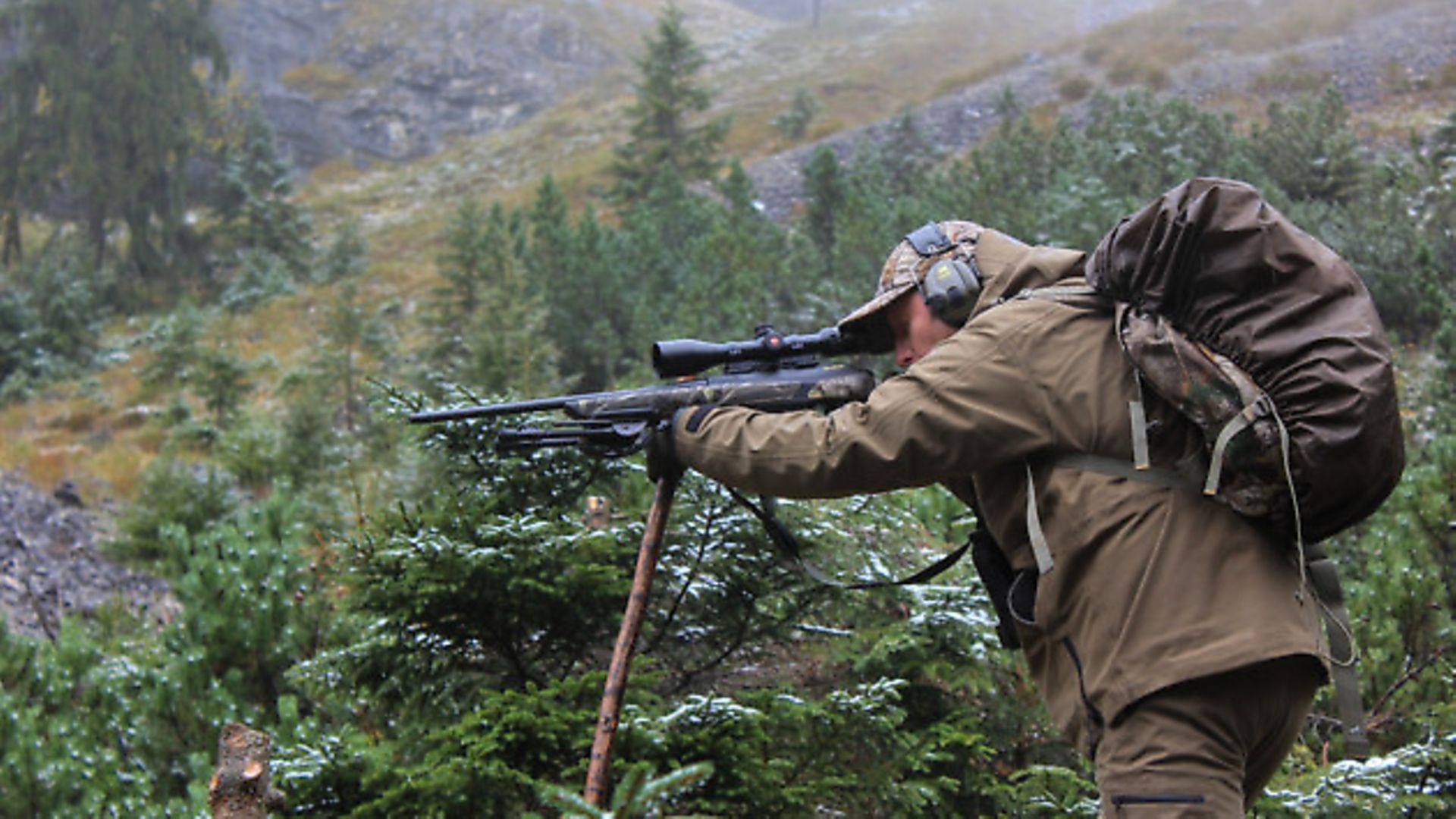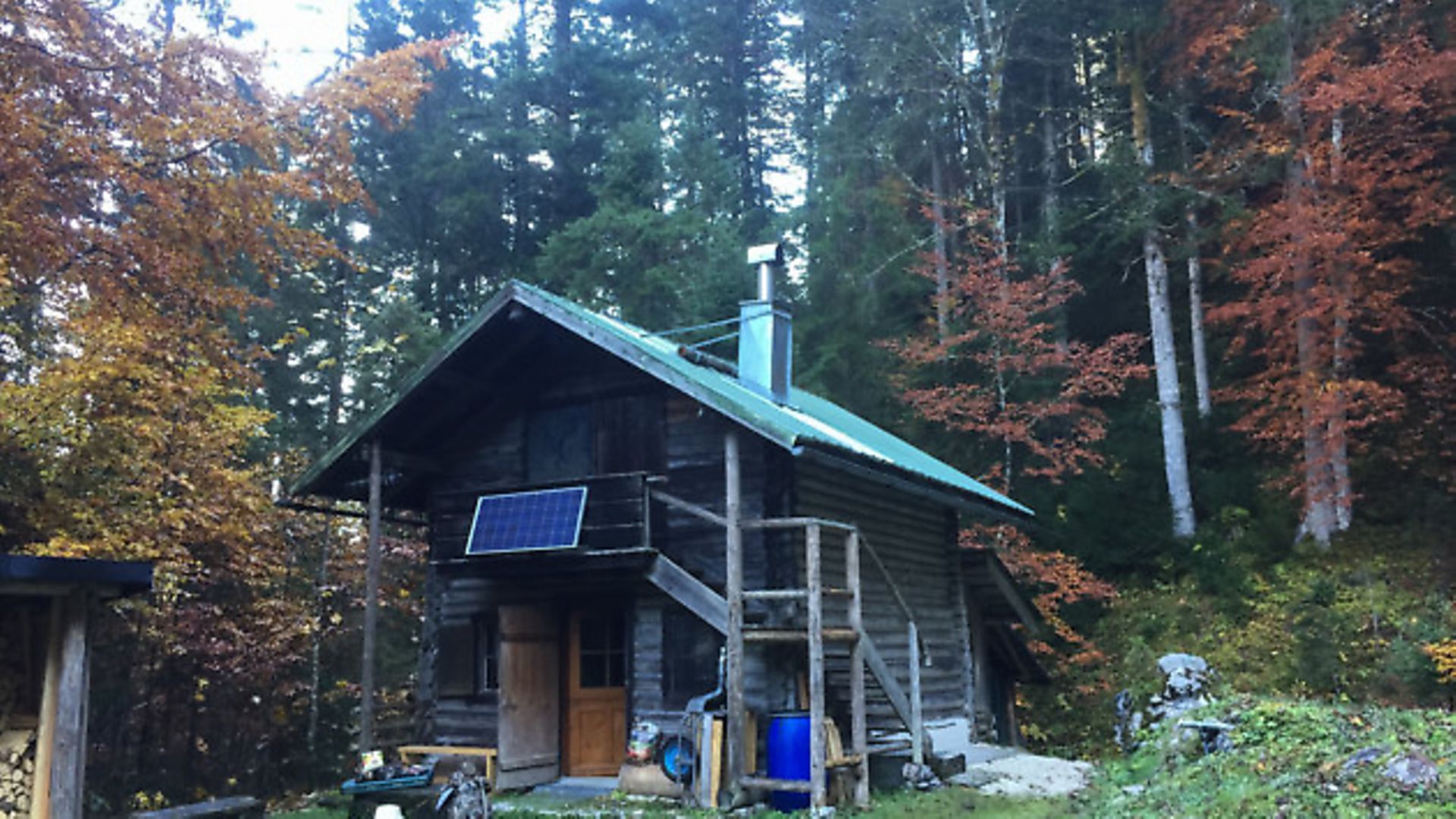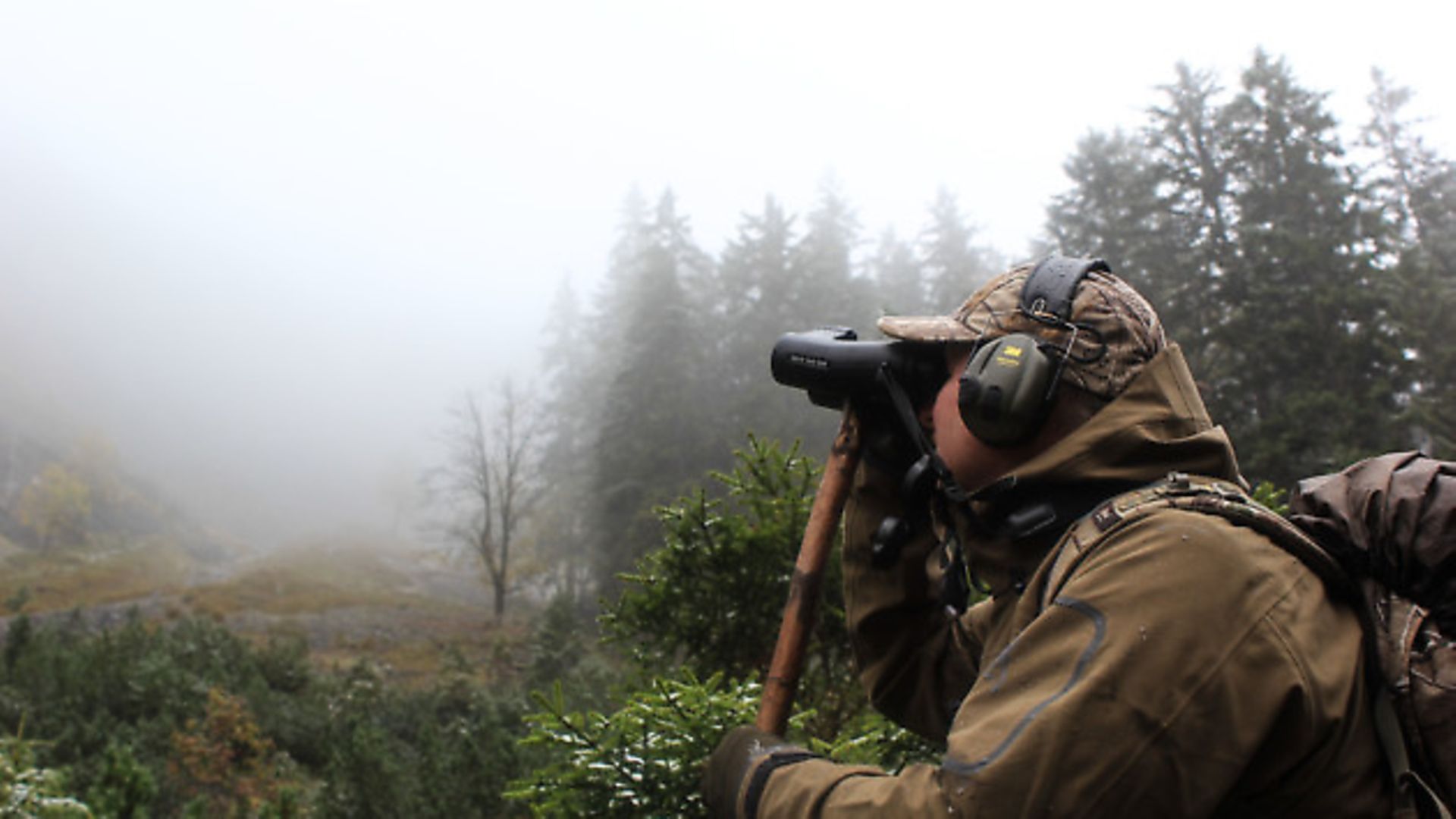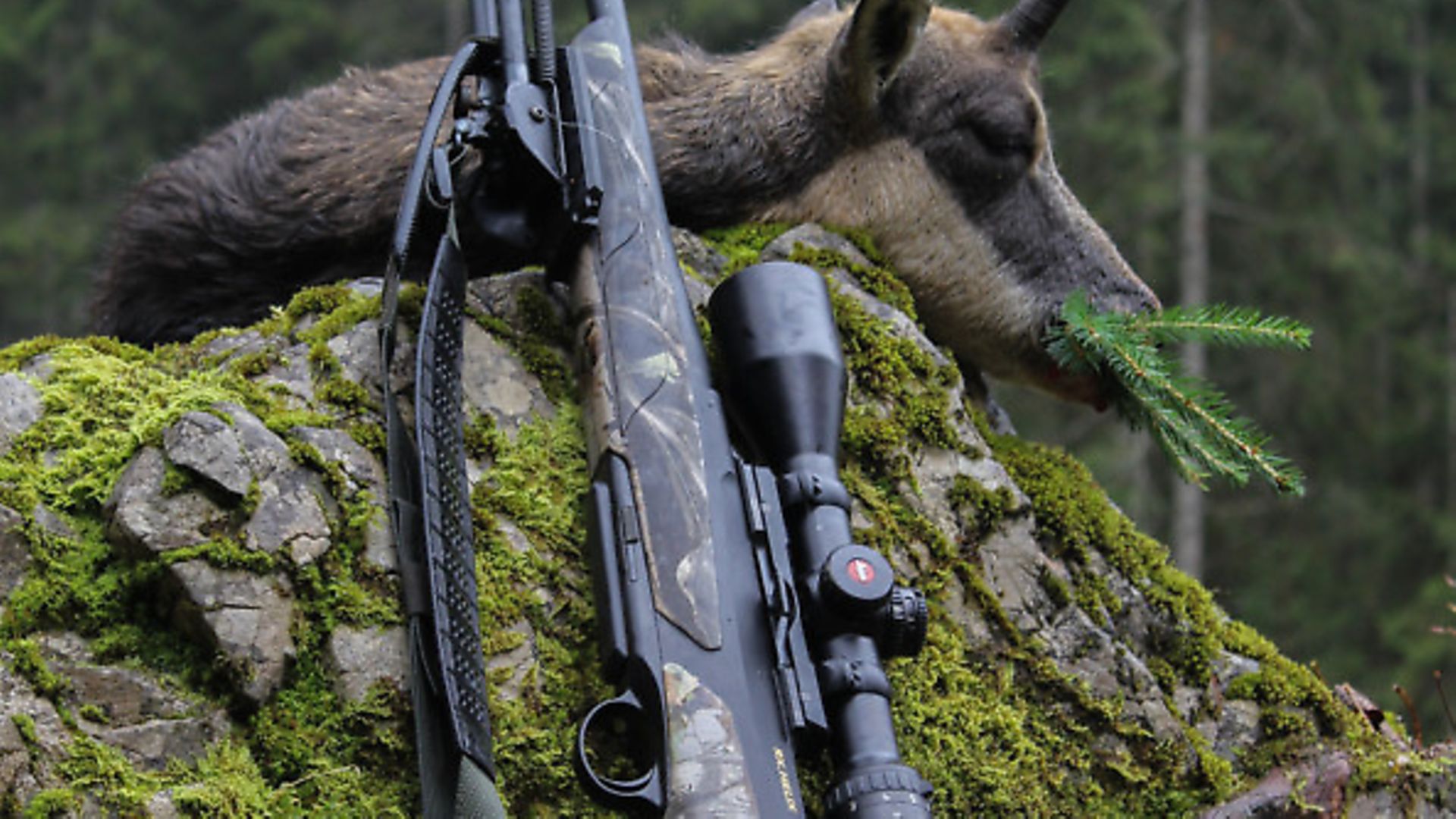Owen puffed his way up the Bavarian Alps in the wake of his two sons, searching for the prized chamois. A botched shot, terrible weather and the taxing ascent won’t make this hunter give up
 credit: Alamy Stock Photo
credit: Alamy Stock Photo
Throughout my lifetime, I have been fortunate enough to hunt many of Europe’s big game species. No matter where or what I’ve hunted, though, nothing compares to the challenge and thrill of chamois (or gams, as they are known in Germanic-speaking countries).
The Alpine chamois (Rupicapra rupicapra) is a goat-antelope native to the mountains of central Europe, and is an animal of the high terrain, living its life between the treelines and mountain peaks of the Alps. They are amongst Europe’s most prized trophies due to the challenging nature of the hunt.
Both the bucks and does are horned and never shed. The bucks’ horns tend to be thicker and curve rearward towards the head, with a more pronounced hook than the females’. Both trophies are much respected, and to shoot a female (geiss) over 10 years old is the stuff of legends.
I first hunted this wily bovid back in the early 90s in the Austrian Alps, on a fantastic trip with a group of like-minded English farmers who swapped quality Sussex roe bucks for a chance to climb an Alpine mountain. After two days of climbing at 2,500m, sleeping in an Alpine jagdhutte (hunting house), eating breakfasts of chanterelle mushrooms and drinking far too much Williams schnapps, I took my first bock (buck) at 250m and my love for mountain hunting was born.
 credit: Archant
credit: Archant
Over the years since, I have hunted chamois in Austria and France, and last year I received a special invitation to the Bavarian Alps, between Germany and the Austrian border. Tom and Dan, two of my three sons, were invited to join me so it was going to be lovely to share the experience and hopefully capture it on film.
The hunt was over a three-day period and we would spend two nights ‘up the mountain’, so we had to carry any supplies, kit and weapons up to the jagdhutte. This would be our base camp.
It was mid-October and the autumn mountains were resplendent, the reds and yellows of the foliage dramatic below the mountain peaks. As we unloaded our backpacks from the 4x4, preparing for the one-hour climb up the mountain, the colder, thinner air of the Alps filled our lungs.
 credit: Archant
credit: Archant
With all our kit, it was an arduous climb, and we stopped regularly to admire the view (or catch my breath!) and drink some water. Although we started in bright sunshine, it became duller as we made our ascent. Finally, we left the main path and picked our way along what seemed like a deer path, until we found a glade that looked onto the steep stone face of our mountain.
Set back next to a tumbling stream was a beautiful jagdhutte, all built by hand over a century ago. Everything was brought up on the backs of ponies, including the wood-burning stove!
We unpacked and lit the fire, which burned for the duration of our time up there, providing heat for cooking and drying our kit. By the time we’d had a brew, the light was starting to fade, so we set out on a steep climb, heading to high seats that each of us would sit in, looking across an area frequented by chamois.
The mountain mist came in as the warm ground temperature collided with the cold mountain air. I sat on one seat with my son Dan for two hours, but to no avail, except the insistent ‘klock, klock, klock’ of the ravens going to roost. We carefully picked our way back down the mountain and rendezvoused with the guide and my older son, Tom. A blank. Nothing seen by anyone.
 credit: Archant
credit: Archant
Next morning we were up and out an hour before daybreak, climbing steeply for two hours, stopping every so often to get our breath. Light broke and so did the weather. With a fine mountain rain falling, it was pleasantly cooling for the red-faced guy following along behind the three fitter members of the party – still, I reminded myself how much I loved this and it was truly a pleasure to be sharing it with my boys.
We reached the top of the mountain valley and stopped for a break, filling our water bottles in a mountain stream and changing our ringing-wet base layers for dry ones. We set out glassing the stone faces above us for any signs of our quarry. Quite quickly we spotted a mature beast across the valley from us.
My guide confirmed he was a good bock and possibly medal class, and urgently instructed me: “Quickly, quickly… take him, he’s yours. He’s spotted us! Quickly, we haven’t got much time, take him!”
 credit: Archant
credit: Archant
My backpack was off quick as a flash and I was on the deck, my binos confirming it was just over 300m. Bipod out, lens caps off, deep breath. And then it was action stations! The adrenaline took over and surged through my system. I know how my clients feel now when I put them in front of something special and go into ‘take it quickly’ mode.
I wound my Leica ERi to the maximum 12x and hunted the buck in my scope. There he was. Bloody hell, I thought, it was still a long way. “Quickly, quickly,” urged my guide, “you must take him now.” I expelled my breath and put the red dot ‘on the money’. I squeezed the Hornady .308 Win round away.
BOOM! I watched as the round kicked up the stone just below him. I reloaded my RX Helix swiftly, re-chambering faster than most, but it was too late. Just like an old roe buck, he was away into cover and safety – a complete miss.
I turned to the guide, extremely disappointed in myself. I don’t miss many and I certainly didn’t come all this way to climb a mountain to bloody miss at 300m.
 credit: Archant
credit: Archant
“Don’t worry!” said my guide. “That’s mountain hunting!” But I thought, no, that’s pilot error. I know my rifle, ammunition and scope, but in the heat of the moment, excitement and adrenaline, I had forgotten to dial in my ballistic turret and had taken the shot. It was set at four clicks, zero at 200m. All I would have needed was to have clicked it up to 12 and perhaps it would have been a different story. Lesson learned, I thought.
We continued for a couple more hours, glassing every crevasse of the mountain face in front of us. We saw several groups but they were physically unreachable or in the wrong wind direction, so we finally returned to base to rest, dry out and clean our weapons, which were thoroughly soaked.
That evening saw a repeat of the night before. Dan and I made our way back up to our lofty perch of a high seat, the scree slope slipping away below us with every tread, but with the promise from my guide that there was definitely a ‘sehr gut bock’ in this area. Unfortunately for us, though, low cloud came in and it was relatively impossible. It took us more than two hours to descend precariously in torchlight. We finally made it back to the warmth of the jadghutte, a meal of spaghetti bolognese and a cold German beer.
 credit: Archant
credit: Archant
It was the end of day two and we had not been lucky with the weather, or my shooting. We had seen plenty of ‘chammy’, but none within range or suitable to shoot. The next day would be our last outing and the weather forecast was for snow.
With a few more beers, a Williams schnapps nightcap and the warm glow of the fire, we were all asleep quickly, but it wasn’t long before the alarm rang and we were pulling on our dry (but smoky) kit. We headed out a good hour before light. It was snowing slightly and there was a covering on the ground.
As the light broke we spotted movement on the treeline. The chamois had moved down the mountain to feed on the forest edge, due to the snow it seemed. The group consisted of several females and kids, all middle aged or young, and not what we were after. We moved on, looking for a suitable buck.
It was pre rut and so the mature males would still be by themselves. We climbed and looked, and climbed and looked, each time spotting beasts that were all unsuitable. My guide finally shrugged his shoulders as if to say ‘not this morning’. We returned, retracing our steps, which were already covered in melting snow.
 credit: Archant
credit: Archant
It was a good two hours back to base and we continued to stalk as we picked our way along the difficult paths. After an hour of seeing nothing, hope began to fade and we stopped to take a drink from a mountain stream. As we sat there sweating, we saw movement above us on a grassy face that the sleet had not settled on. Two chamois were stood together feeding, a doe and a kid.
My guide stared at them, and I was relaxed as we had seen and passed many throughout the morning. “That is a very old geiss with a very poor kid… you must shoot them now, quickly!” There was no time to get on the floor or remove my backpack, etc. The wise old geiss had spotted us and gave out a whistle alarm call. She started to climb up the sheer cliff behind her, followed swiftly by the kid. I stood, parted my stalking sticks and brought my Merkel down onto it. “How far?” I asked. “150 metres,” said Dan.
This is more like it, I thought. Just like my fallow cull. I put the red dot of the scope onto the kid. The angle was something like 30 degrees, so I aimed low to compensate and squeezed the trigger. BANG! the kid fell.
 credit: Archant
credit: Archant
I recycled the Helix and picked out the doe. She was higher but had stopped to look at what I had done. My red dot found her shoulder and another un-silenced 150g SST round hit home. She fell down the mountain onto the grassy slope. Job done.
“Watch out!” my guide shouted, as the chamois continued to roll down the hill towards us, stopping only 20m in front. Wow! What a hunt! Out of nothing came something, and my guide was over the moon I had took the weakling kid first. “Very sporting!” he said. “I think I went into fallow-cull mode,” I laughed.
We cleaned them out and carried them off the mountain. Later, back at the jagdhutte, we confirmed the age of the geiss as over 10 years old – a perfect one to take and the oldest to be measured at the local hunting show that year.
It was another fantastic mountain hunt. Every single one I’ve experienced has been a challenge and has been different to the others, but what a thrilling experience. As Mr Schwarzenegger once said, I’ll be back!
____________________
You may also like:
Alex Hatton hunting black bear - Canada
Balearic Boc hunting - Mallorca
Ulf Lindroth and Erika Bergmark hunt beaver - Sweden